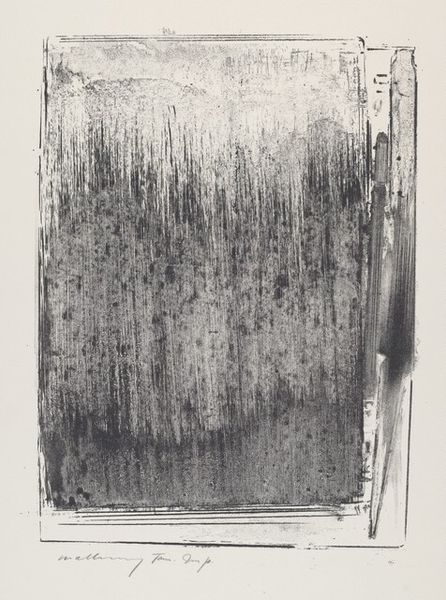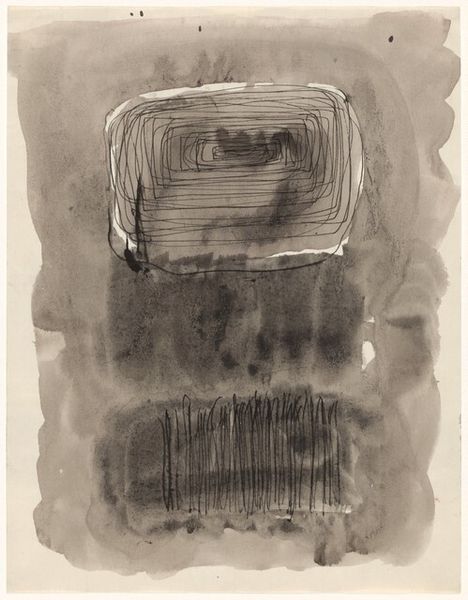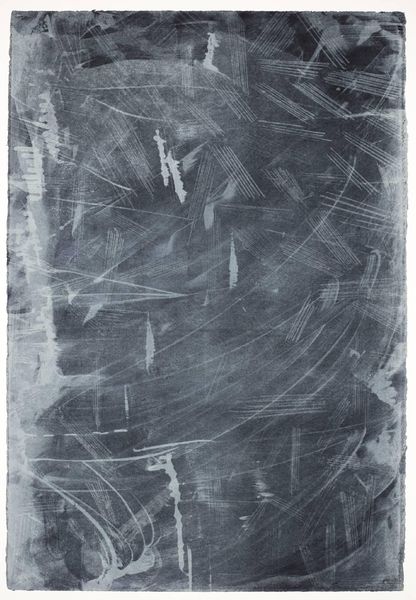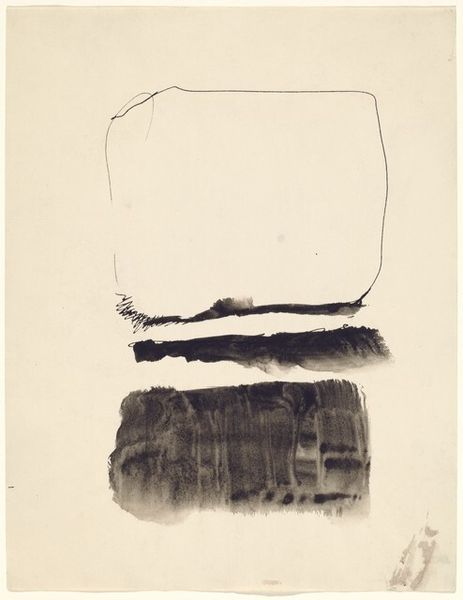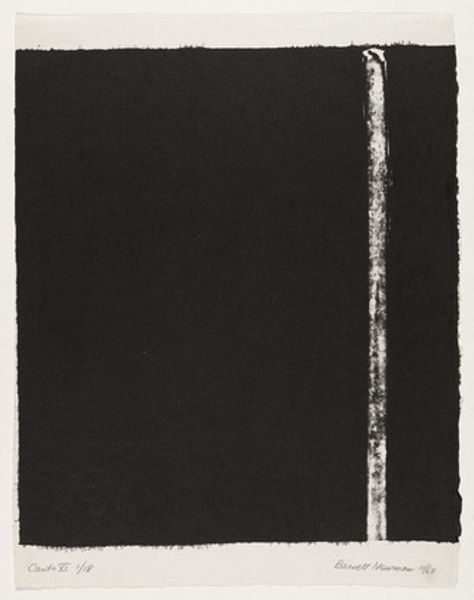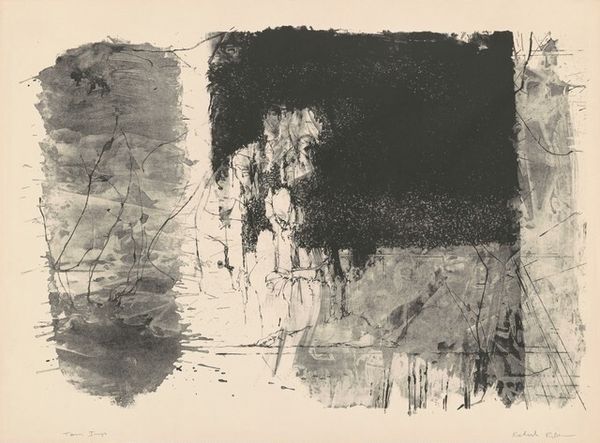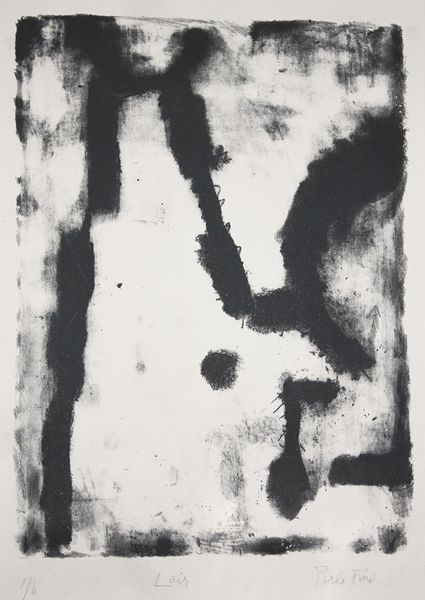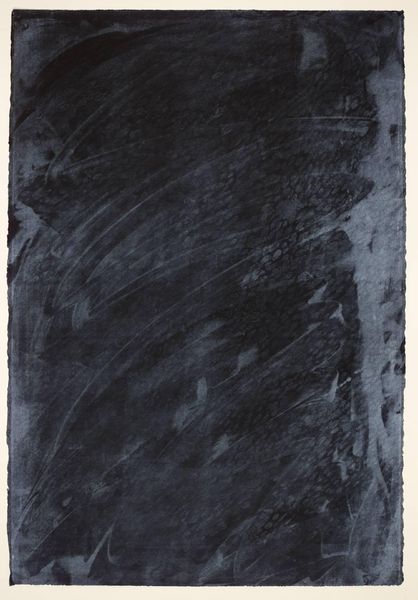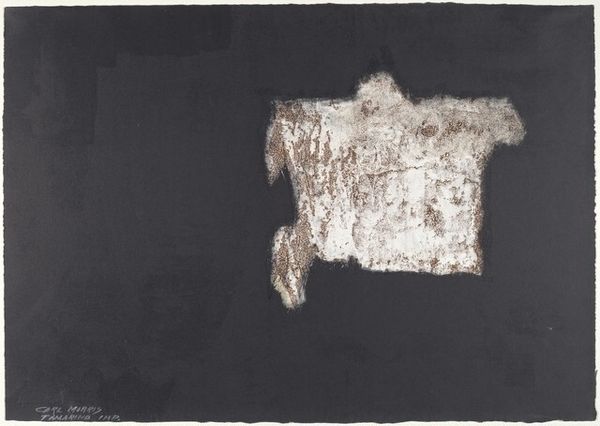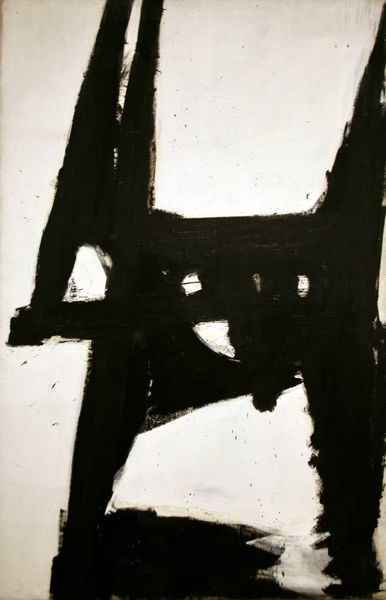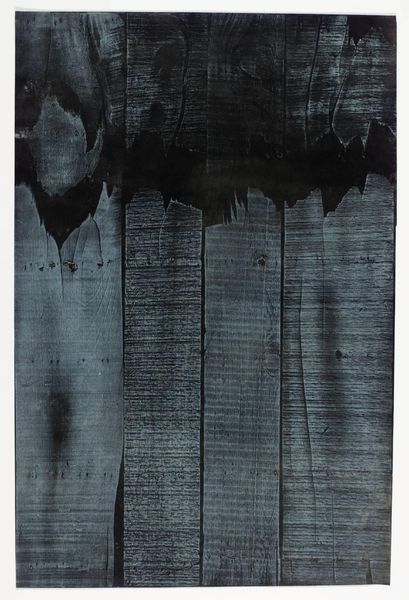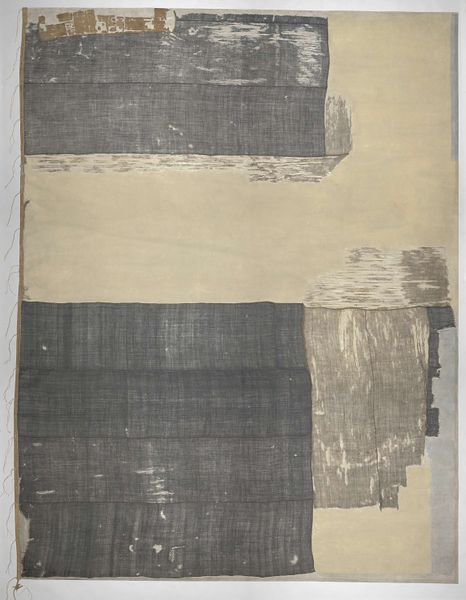
lithograph, print, ink
#
abstract-expressionism
#
lithograph
# print
#
ink
#
abstraction
#
monochrome
Copyright: National Gallery of Art: CC0 1.0
Editor: So, here we have an untitled lithograph by Emerson Woelffer, created in 1961. It’s stark—really monochrome. What do you see in this piece? Curator: This work strikes me as a visual scream from the early sixties, doesn’t it? It's abstraction, but the weight of that central black form, the deliberate gestural strokes… it resonates with the anxieties simmering beneath the surface of American society at that time. The Cold War, the burgeoning Civil Rights Movement – could those social struggles be somehow related to this work? Editor: Anxieties, yes, I hadn't considered that context. I saw it more as formal—just the interplay of shapes. Curator: Precisely, and that’s valid. But consider the deliberate "blocking" of the image, the oppressive darkness. This was a period where societal structures were being both reinforced and challenged. Where does this push and pull sit with you when regarding the artist and his time? Editor: It gives the work an intensity I didn't appreciate at first. Almost as if that central shape is struggling to contain something. Curator: It also reminds us that abstraction isn’t devoid of content. Even seemingly non-representational forms can hold powerful social commentary. Consider too the legacy of Abstract Expressionism in the face of Pop Art… a reaction against what was perceived as elitism, perhaps. Is that "black block" about more than formal blocking of visual material and more of an activist agenda pushing at the viewer? Editor: That's a compelling thought—how abstraction can push an activist agenda. Thank you for opening that perspective. Curator: My pleasure. Thinking about art this way helps us connect historical contexts to contemporary conversations about identity and power. The canvas speaks louder than the artist when the artwork engages.
Comments
No comments
Be the first to comment and join the conversation on the ultimate creative platform.

